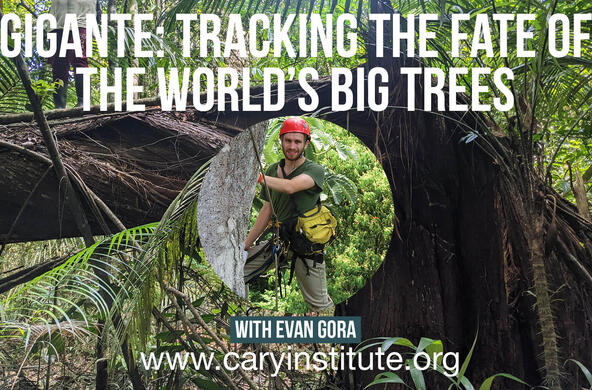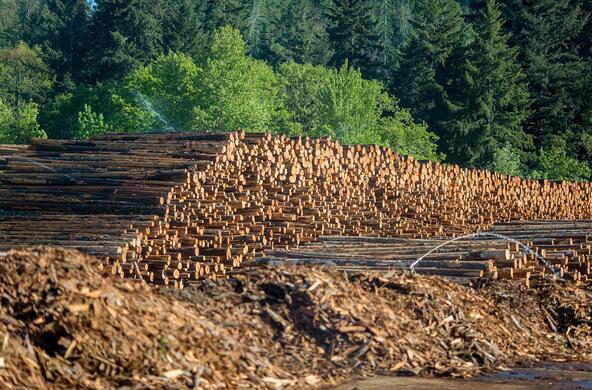One of the puzzles of atmospheric chemistry is why the concentration of carbon dioxide (CO2) isn’t rising even faster than we observe in the atmosphere.
The estimates of human emissions to the atmosphere are now about 37 billion metric tons of CO2 each year.[1] About 45% stays in the atmosphere, and about 25% is taken up by the oceans. The fate of the rest is uncertain, although many people believe that the regrowth of vegetation on disturbed lands may account for much of it.
The unknown fate of the CO2 emissions to the atmosphere is known as the “missing sink.” Environmental scientists have tried valiantly to identify the missing sink, for the pace of global warming would be much worse without it. In the process, a number of possibilities have been suggested, including uptake of CO2 by desert soils, production of charcoal in forest fires, and carbon accumulation in coastal seagrass meadows.
Most of these suggestions fail a basic test: if the storage of carbon in the putative missing sink is not something new—that is, since the advent of the Industrial Revolution—it cannot account for the unknown fate of carbon dioxide emitted by current human activities.
Consider an analogy to a checking account: Suppose you have a checking account into which you deposit $1000 each week and from which you pay a variety of bills, including your electric bill, that total $1000 per week. Then, you get a raise to $1100 each week, which you continue to deposit in the account. But, you notice that your account balance is only growing by $70/week. The other $30 seems to be missing—a missing sink.
Frantically, you search for where that $30 is going. You notice that the electric bill amounts to $30 each week, and your first thought might be that the electric bill explains the missing sink. Unfortunately, that would be wrong: the electric bill was being deducted from your account, when it was stable, before you got your raise. Paying the same bill now can’t be an explanation for the missing money from your weekly raise.
Similarly, no removal of carbon dioxide from the atmosphere that was occurring before the Industrial Revolution can be used to explain the unknown fate of the additional carbon dioxide that we put into the atmosphere today. The pre-existing sink for carbon dioxide was part of the budget for CO2 in the atmosphere, when the CO2 content in the atmosphere was stable. It balanced the sources of CO2 in the atmosphere before the Industrial Revolution and cannot simultaneously balance any of the incremental sources of CO2 that we have created in recent years.
The regrowth of vegetation on areas of land cleared during the earlier years of the Industrial Revolution is a viable candidate for the missing sink, if this regrowth is greater than the ongoing disturbance and deforestation that is occurring in the tropics today. Stimulation of forest growth due to higher concentrations of CO2 in the atmosphere (remember CO2 supplies plant photosynthesis) is another potential sink.
It is important not to destroy or disrupt any sinks for atmospheric CO2 –both natural and recent, so identifying the missing sink is not an esoteric problem for environmental scientists to fret about. If forests represent the missing sink, this speaks strongly for the need to conserve forests—reduce deforestation and encourage reforestation—worldwide. Growing forests remove CO2 from the atmosphere, mitigating the global warming problem brought on by fossil fuel combustion.
Healthy forests provide a service to all of us each day. And the search for the missing sink—the Holy grail of biogeochemistry—may very well end in forests.
References
Ballantyne, A.P., R. Andres, R.A. Houghton, B.D. Stocker, R. Wanninkhof, W. Anderegg, L.A> Cooper, M. DeGrandpre, P.P. Tans, J.B. Miller et al. 2015. Audit of the global carbon budget: estimate errors and their impact on uncertainty. Biogeosciences 12: 2565-2584.
Billings, S.A. and W.H. Schlesinger. 2014. Pyrogenic organic matter production from wildfires: a missing sink in the global carbon cycle. (Letter to the Editor) Global Change Biology DOI: 10.1111/gcb.12836.
Li, Y., Y.-G. Wang, R.A. Houghton, and L.-S. Tang. 2015. Hidden carbon sink beneath the desert. Geophysical Research Letters doi: 10.1002/2015GL064222
Schlesinger, W.H. 2011. Comment on pedogenesis and soil-geomorphic relationships in an arid mountain range, Mojave Desert, California. Soil Science Society of America Journal 75: 1172.
Schlesinger, W.H. and E.S. Bernhardt. 2013. Biogeochemistry: An analysis of global change. Academic Press/Elsevier, New York
[1] This contains about 10 billion tons of carbon








